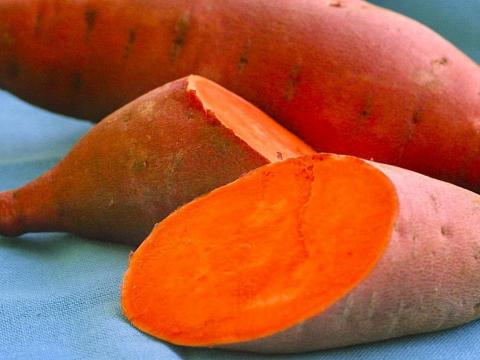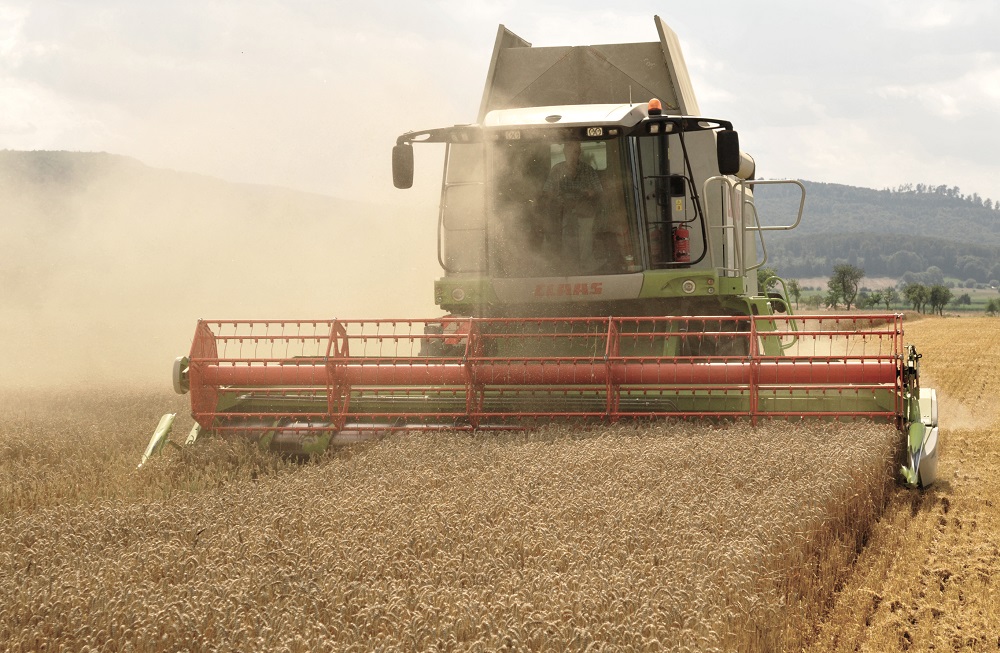
By George Munene
With the orange-fleshed sweet potato, OFSP, now classed as a superfood thanks to its many health benefits, its demand has been growing both locally and internationally for those looking for healthier food options.
Orange fleshed sweet potatoes are loaded with beta carotene, a rich source of vitamin A.
Since 2001, the biofortified orange-fleshed sweet potato has been introduced to over 14 African countries by The International Potato Center (CIP). It contains increased amounts of Vitamin A and antioxidants to regular sweet potatoes due to their high levels of beta-carotene--the organic, red-orange pigment that gives orange-fleshed sweet potatoes an orange color.
These are nutrients important for the immune system, skin, vision, bones, and reproductive health, as well as having cleansing properties that reduce risks of developing cancer.
According to the global trade tracker Trade Map, the value of sweet potatoes imported in 2019 was about 844.472 tons--a doubling of volumes from 2015. This was worth Sh75 billion, up from Sh60.5 billion in 2018, a 393,502kgs increase in volumes.
Orange-fleshed potato varieties account for 95 per cent of European market imports and offer local farmers lucrative opportunities.
Barbara Magoha, managing director for Barrinate Farms offers export opportunities to aggregated farmers from Western and Nyanza regions. “We export organically farmed Kabode orange-fleshed sweet potato, which is in demand in European and Arab countries due to its high nutritive value,” she said. Although the export market has been momentarily suspended due to the Coronavirus, the quantities she exports vary depending on the availability of the crop from other regions. When other major suppliers like Egypt, Spain and Senegal are off-season, especially over April to June months, her company works to plug this market gap.
This ever-expanding market and the Economic Partnership Agreement (iEPA), which gives duty and quota-free market access to the European Union offer great opportunities for Africa farmers.
Related News:Agritech startup giving market to small-scale banana, pumpkin, sweet potato, arrowroot & yam growers
Related News: Proper planting for over 10 tonnes from acre of sweet potatoes
Sara Murimi, a KEPHIS certified sweet potato multiplier, says the American orange-fleshed potato variety is in demand with supermarket and fresh produce outlets such as Carrefour, Zucchini, and Chandarana. While a vine can yield one to two kilograms; she advises farmers to limit tuber weight to between 1 and 1½ kgs--a weight more preferred by consumers. She sells 1000 cuttings for Sh10 each, with anything above at a discounted Sh7.5. A farmer will need two thousand vines to sow an acre.
Orange-fleshed sweet potatoes being a cheap and sustainable source of Vitamin A offers a low-cost answer to meeting some of Africa’s nutrition deficit.
According to Nutrition International Vitamin A Deficiency (VAD) and marginal VAD prevalence was observed to be 9.2 per cent and 52.6 per cent respectively among preschool children. A lack of vitamin A weakens the immune system, putting a child at a 20–24 percent increased risk of disease and premature death. It is also the leading cause of child blindness in developing countries. Up to 500,000 Vitamin A-deficient children go blind every year, half of them dying within 12 months of losing their sight.
According to the International Potato Center one small boiled root of most orange-fleshed sweet potato varieties provides 100% of the recommended daily intake of vitamin A for children and is a good source of energy, a number of B vitamins, minerals (phosphorus, potassium) and vitamins C and K. These are vital benefits for the majority of people affected by VAD who live in rural areas where conventional VAD interventions such as supplementation and food fortification are less effective
For George Aristole, a sweet potato farmer and seedling propagator, local consumers need to be sensitized to the innumerable benefits of the orange-fleshed sweet potato in order to diversify their eating habits and shift from consuming just the white-fleshed sweet potatoes which offer little more than starch in their diets. He propagates the Irene orange-fleshed sweet potato which under good agronomic practices he says has a yield potential of up to 6 tonnes an acre. He sells a kilogram of vines for Sh1300, a price that varies depending on a farmer's distance and the number of vines they purchase.
Orange fleshed sweet potato puree is also used to fortify bread and other confectioneries. Besides improved nutrition, this has been shown to reduce wheat bread and sugar cost by 20 per cent and by 5 respectively. It can also be used to make chips, crisps, flour, cakes, muffins, buns and juice.
Related News: Sweet potato vines and roots silage offers livestock more proteins
Evelyne Mwangi offers two varieties of orange-fleshed sweet potatoes for sale to farmers; hard and soggy. The hard OFSP is further split into Kenspot 5 and 3; these sub-varieties have a broader local market but can only be consumed after boiling. She charges Sh5 a vine for 1000 vines and Sh3 for any number above that. American orange-fleshed sweet potatoes are classified as soggy and are progressively gaining popularity. “More traveled Kenyans will opt for the American OFSP given that they can be value-added in the making of fries, crisps and fortified flour; they also contain a higher content of both Vitamin K and beta carotene,” she pointed out. For these, she sells one thousand one-foot vines for Sh10 a piece and for Sh5 above that.
Sweet Potatoes are adapted to most of Kenya's ecological zones and can be grown in all soil types apart from black cotton soils. They have a short production cycle of 3-4 months and are also grown year-round. The crop's roots and vines meanwhile can be consumed by both humans and animals.
Evelyne Mwangi 0720 96 84 65
Sara Murimi: 0720 697390
Elim Farm:0721745950


















